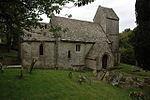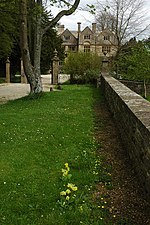Miserden War Memorial
Grade II listed buildings in GloucestershireGrade II listed monuments and memorialsMilitary history of GloucestershireMonuments and memorials in GloucestershireWar memorials by Edwin Lutyens ... and 3 more
Works of Edwin Lutyens in EnglandWorld War II memorials in EnglandWorld War I memorials in England

Miserden War Memorial is a First World War memorial in the village of Miserden, near Stroud, in Gloucestershire, south-western England. The memorial, designed by Sir Edwin Lutyens, is today a grade II listed building.
Excerpt from the Wikipedia article Miserden War Memorial (License: CC BY-SA 3.0, Authors, Images).Miserden War Memorial
Miserden Park Lane,
Geographical coordinates (GPS) Address External links Nearby Places Show on map
Geographical coordinates (GPS)
| Latitude | Longitude |
|---|---|
| N 51.77857 ° | E -2.09385 ° |
Address
Miserden War Memorial
Miserden Park Lane
GL6 7JA
England, United Kingdom
Open on Google Maps










